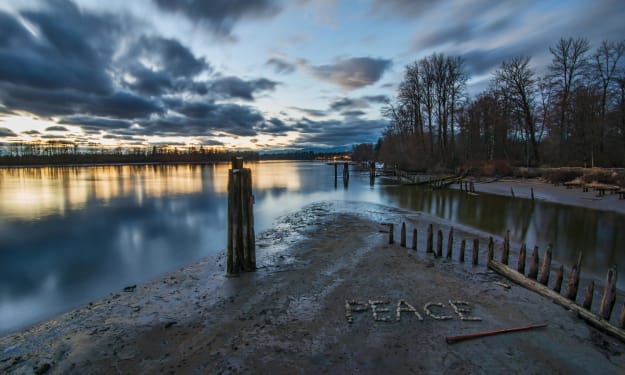"Philippines Essentials"
Discovering the Beauty, Culture, and Diversity of the Philippines.

The Philippines is a Southeast Asian country located in the western Pacific Ocean. It is composed of over 7,000 islands and has a population of approximately 110 million people. The country's capital is Manila, which is located on the island of Luzon.
History:
The Philippines was colonized by Spain for over 300 years until it gained independence in 1898. It was then occupied by the United States until 1946 when it finally gained full independence.
Language:
The official languages of the Philippines are Filipino and English. However, there are over 100 different dialects spoken throughout the country.
Culture:
The Philippines has a rich cultural heritage that reflects the influence of its Asian and Western colonial history. The country is known for its festivals, food, music, and dance. It is also home to many beautiful beaches and natural wonders.
Economy:
The Philippines has a rapidly growing economy, with the service sector being the largest contributor to its GDP. It is also a major producer of electronics, garments, and agricultural products.
Politics:
The Philippines is a democratic republic with a presidential system of government. The current president is Rodrigo Duterte, who assumed office in 2016.
Religion:
The majority of Filipinos are Roman Catholic, with Islam and Protestantism being the next most widely practiced religions.
Challenges:
The Philippines faces a number of challenges including poverty, corruption, and natural disasters such as typhoons, earthquakes, and volcanic eruptions. It is also dealing with ongoing conflicts in some parts of the country, particularly in Mindanao.
Geography:
The Philippines is located in Southeast Asia, and it is the fifth-largest island country in the world. It is composed of three main geographical regions: Luzon in the north, Visayas in the central region, and Mindanao in the south. The country has a total land area of approximately 300,000 square kilometers and is surrounded by the Philippine Sea to the east, the South China Sea to the west, and the Celebes Sea to the south.
Population:
The Philippines is the world's 12th most populous country, with a population of approximately 110 million people. The population is a mix of different ethnic groups, including Tagalog, Cebuano, Ilocano, Bicolano, and Waray, among others.
Education:
Education is highly valued in the Philippines, with a literacy rate of around 97%. The country has a system of basic education that includes six years of primary school, four years of junior high school, and two years of senior high school. There are also many universities and colleges throughout the country.
Tourism:
Tourism is an important industry in the Philippines, with many visitors drawn to the country's natural beauty, beaches, and cultural attractions. Popular tourist destinations include Boracay, Palawan, Cebu, and Manila.
Cuisine:
Filipino cuisine is a blend of different flavors and cooking styles influenced by the country's diverse cultural history. Some popular dishes include adobo, lechon, sinigang, and kare-kare, among others. The country is also known for its street food culture.
Sports:
Basketball is the most popular sport in the Philippines, and it is played at both amateur and professional levels. Other popular sports include boxing, football (soccer), volleyball, and billiards.
Infrastructure:
The Philippines has a developing infrastructure, with ongoing efforts to improve transportation, communication, and energy systems throughout the country. The capital city of Manila is home to an international airport and a major seaport, and there are plans to build new airports and expand existing ones in other parts of the country.
Arts and literature:
The Philippines has a rich artistic and literary tradition that dates back to pre-colonial times. Traditional arts include weaving, wood carving, and pottery, among others. Philippine literature includes epics, poetry, and novels that reflect the country's history and culture. The National Artist Awards is a recognition given to Filipino individuals in the arts and literature for their contributions to Philippine culture.
Healthcare:
The healthcare system in the Philippines is a mix of public and private facilities. While there have been improvements in recent years, access to quality healthcare remains a challenge, particularly for those living in rural areas.
Technology:
The Philippines has a growing technology industry, with a focus on software development and IT services. The country is also known for its thriving business process outsourcing (BPO) industry, with many global companies outsourcing their operations to the Philippines.
Environment:
The Philippines is home to a diverse range of flora and fauna, including many endemic species. However, the country faces a number of environmental challenges, including deforestation, pollution, and the destruction of marine ecosystems.
Transportation:
Transportation in the Philippines is largely composed of roads, with a network of highways and major expressways connecting different parts of the country. There are also domestic airports and seaports that provide access to different islands.
Holidays and celebrations:
The Philippines is known for its many festivals and celebrations, which reflect the country's religious and cultural traditions. Some of the most popular festivals include the Ati-Atihan festival in Aklan, the Sinulog festival in Cebu, and the Dinagyang festival in Iloilo.





Comments
There are no comments for this story
Be the first to respond and start the conversation.